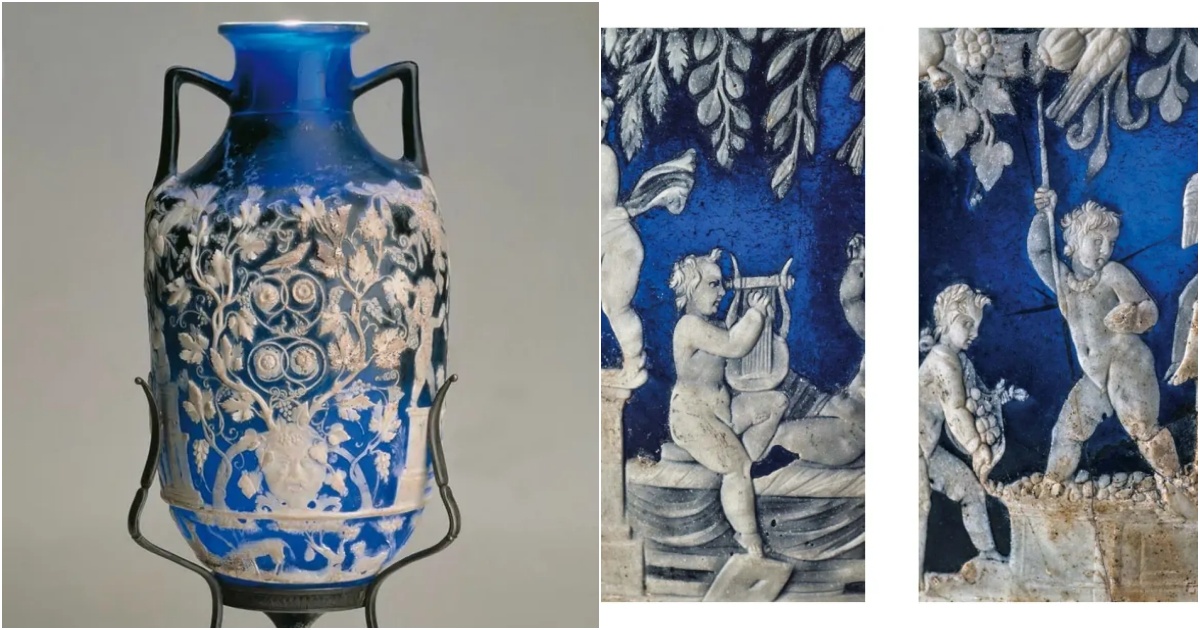Discovering the Blue Vase of Pompeii: A Timeless Masterpiece

Unearthed at Pompeii on December 29, 1837, during a royal inspection led by King Ferdinand II, the “Blue Vase” stands as one of the most cherished treasures of the Naples National Archaeological Museum.
Its discovery in the House of the Mosaic Columns captivated onlookers, though some speculate that the vase may have been intentionally “planted” by excavators to impress the king and his entourage. Such staged discoveries were not uncommon during the era, designed to maintain excitement and ensure ongoing funding for further excavations.
The “Blue Vase” is a rare example of Imperial Roman cameo glass, a fragile and prized form of craftsmanship. Only a few such vases have survived to the present day, with the most famous being the “Portland Vase” housed in the British Museum. These exquisite pieces were created by fusing layers of colored glass in a furnace, typically resulting in a translucent cobalt blue background topped with a layer of opaque white. Once cooled, artisans painstakingly etched away the top layer to create intricate designs that contrast beautifully against the glass beneath.
The ”Blue Vase” features joyful scenes of pudgy putti, or cherubic figures, harvesting grapes and playing musical instruments. These playful figures are framed by elaborate grapevines bearing clusters of fruit, with birds perched delicately among the vines.
At the center of the vase’s iconography is Silenus, the trusted companion of Dionysus, the god of wine. Silenus appears with antler-like grapevines sprouting from his head, adding to the celebratory mood of the piece. Circling the base of the vessel are depictions of Mediterranean flora and fauna, grounding the vase in the natural world.
Shaped like a traditional wine amphora, the vase’s design not only honors Dionysian themes but also speaks to the artistry of Roman glassmakers. This masterpiece is a testament to the skills of the ancient craftsmen who brought it to life, with each detail reflecting the cultural significance of wine and festivity in Roman life.
Though over 180 years have passed since its discovery, the “Blue Vase” remains one of the most prized artifacts in the Naples National Archaeological Museum, just a short walk from the museum’s entrance. It continues to draw visitors from around the world, who come to admire its delicate beauty and the timeless story it tells of craftsmanship, celebration, and the splendor of ancient Rome.








